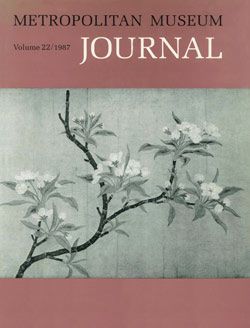Allegorical Figure of Fame
Cavaliere d'Arpino (Giuseppe Cesari) Italian
Not on view
The attribution of this drawing to Giuseppe Cesari, Cavaliere d'Arpino, is traditional, as can be seen from the early annotation in pen and brown ink at lower right on the sheet, and which was repeated in embellished calligraphy at the bottom on the elaborate blue mount by the great French collector, Pierre-Jean Mariette (1694-1774), who was one of its early owners. The drawing was part of the sale at auction of the fabled Mariette collection, recorded in the Catalogue raisonné des différens objets de curiosités dans les sciences et arts, Paris, 1775, p. 22, lot 126. In 1987, Lawrence Turčic first noticed the connection of this drawing to the Allegory of Fame, frescoed by the Cavaliere d'Arpino in 1613-15 on the ceiling of the Palazzina Montalto in the gardens of the Villa Lante at Bagnaia (near Viterbo). In his 2013 catalogue raisonnée on the artist, Marco Simone Bolzoni more precisely described that this drawing dated earlier, to the 1590s, and that the artist had intended it as a highly finished, autonomous work, which he then later reused to decorate the Palazzina Montalto.
As seen here, the careful drawing technique, combining red and black chalks, is typical of the artist, although the design surface is somewhat rubbed. A virtuosic draftsman and fresco painter, the Cavaliere d'Arpino was among the last Mannerist painters active in Rome and Naples. He trained several artists of the following generation, including Guido Reni and Caravaggio.
For the published references on the drawing, see Bibliography.
(Updated, January 02, 2024; Carmen C. Bambach)
This image cannot be enlarged, viewed at full screen, or downloaded.




